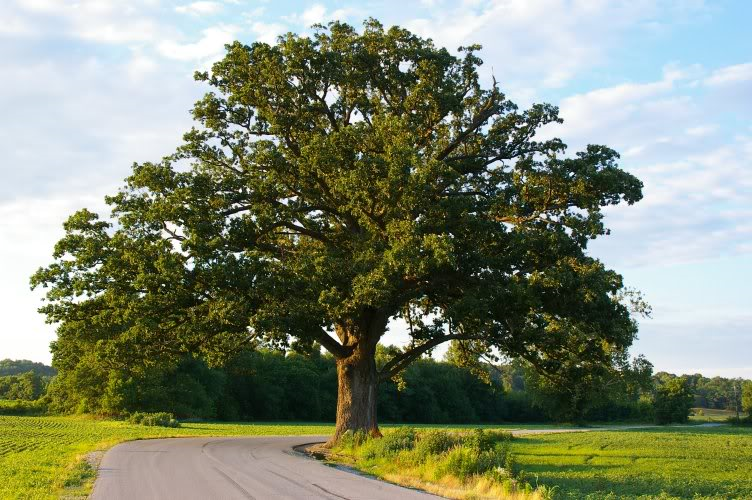
Quercus Macrocarpa and Planting
Introduction
Quercus Macrocarpa, commonly known as the bur oak, is a majestic oak species native to North America. Planting Quercus Macrocarpa can be a rewarding experience for both the environment and your landscape. In this article, we will explore the art of planting and caring for Quercus Macrocarpa, a beautiful tree that provides shade, wildlife habitat, and a touch of natural elegance to your surroundings.
Understanding Quercus Macrocarpa
Before you start planting, it’s essential to get to know your tree. Quercus Macrocarpa is known for its distinctive characteristics, including large, lobed leaves and a sturdy, broad trunk. It’s a long-lived tree, with a lifespan of up to 200 years or more. Understanding its growth patterns and preferences is crucial for successful planting.
Benefits of Planting Quercus Macrocarpa
Planting Quercus Macrocarpa offers a multitude of benefits. These trees provide ample shade, making your outdoor spaces more comfortable. They also support local wildlife by offering food and shelter. Moreover, they enhance the beauty of your landscape with their striking, deeply furrowed bark and autumn foliage.
Choosing the Right Location
Selecting the perfect spot for your Quercus Macrocarpa is essential. It should be a sunny location, as bur oaks thrive in full sunlight. Ensure the chosen spot has enough space for the tree to grow to its full potential without interference from buildings or other large trees.
Preparing the Soil
Quercus Macrocarpa prefers well-drained soil. Before planting, make sure the soil is loamy and fertile. You can improve soil drainage by adding organic matter, such as compost. A pH test can also help determine if the soil is suitable for your bur oak.
Selecting Healthy Saplings
When purchasing Quercus Macrocarpa saplings, choose healthy, disease-free specimens. Inspect the roots, stems, and leaves for any signs of damage or disease. Healthy saplings have a better chance of thriving in their new environment.
Planting Quercus Macrocarpa
Now that you’ve prepared the soil and chosen a healthy sapling, it’s time to plant your Quercus Macrocarpa. Dig a hole that’s as deep as the root ball and twice as wide. Place the sapling in the hole and fill it with soil, gently patting it down as you go. Water the tree thoroughly after planting.
Watering and Mulching
Proper watering is crucial for the initial growth of your bur oak. Water the tree regularly, especially during dry spells. Apply a layer of mulch around the base of the tree to retain soil moisture and suppress weeds.
Caring for Quercus Macrocarpa
As your Quercus Macrocarpa grows, it will require care to maintain its health and beauty. Pruning and shaping help create a balanced canopy and remove dead or damaged branches. Regularly inspect the tree for signs of disease or pests and take appropriate measures for control.
Common Issues and Pest Control
Being informed about common issues, such as oak wilt or oak leaf blister, is essential for the well-being of your Quercus Macrocarpa. If you notice any signs of disease or pest infestations, consult with a professional arborist for proper diagnosis and treatment.
Seasonal Maintenance
Seasonal maintenance is crucial to ensure your Quercus Macrocarpa remains healthy and vibrant. In the spring, feed the tree with a balanced fertilizer. In the fall, monitor the tree’s water needs, especially if there’s a drought.
The Beauty of Quercus Macrocarpa
The beauty of Quercus Macrocarpa shines through every season. From its lush, green leaves in the spring and summer to its stunning autumn colors, this tree adds aesthetic appeal to any landscape. Additionally, the bur oak’s acorns provide sustenance for various wildlife species.
Conclusion
Planting Quercus Macrocarpa is a fulfilling endeavor that contributes to the environment and enhances the beauty of your surroundings. With proper care and maintenance, your Quercus Macrocarpa can become a symbol of strength, longevity, and natural elegance in your landscape.
FAQs
1. How fast does Quercus Macrocarpa grow?
- Quercus Macrocarpa is a slow-growing tree, typically adding 12 to 24 inches of height per year.
2. Can I plant Quercus Macrocarpa in a small yard?
- While it’s a large tree, there are dwarf and compact varieties suitable for smaller spaces.
3. Are there any specific pests that target Quercus Macrocarpa?
- Quercus Macrocarpa is susceptible to oak gall, oak wilt, and various borers, so regular monitoring is essential.
4. When is the best time to plant Quercus Macrocarpa?
- The best time for planting is in the spring or fall when the weather is mild.
5. Can Quercus Macrocarpa adapt to different climate zones?
- Quercus Macrocarpa has a wide range but thrives in hardiness zones 3 to 8, making it adaptable to various climates.
Planting and caring for Quercus Macrocarpa is a fulfilling journey that not only adds beauty to your landscape but also supports the local ecosystem. With these guidelines, you can successfully grow and enjoy the magnificence of the bur oak in your outdoor space.